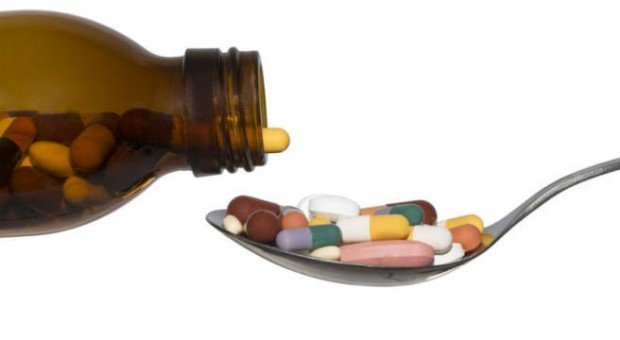According to research, the use of antibiotics over the past century has extended the average human lifespan by 23 years. However, in recent years, our almost over-reliance on antibiotics has begun to compromise our longevity. In fact, the overuse of these medications has begun to increase the risk of them becoming useless, and the COVID-19 pandemic seems to have made this risk an even bigger reality.
What Is Antibiotic Resistance?
“Antibiotic resistance happens when bacteria are exposed to different antibiotics and that exposure provides an opportunity for the bacteria to learn and essentially evolve itself to become resistant for its survival,” – David Hyund, MD, director of the Antibiotic Resistance Project at the Pew Charitable Trusts, VeryWellHealth
As the antibiotic becomes less effective, we’re left battling with treat the diseases that can affect our longevity. A study published earlier in this year in The Lancet concluded that antimicrobial resistance is a leading cause of death worldwide, with the highest burden being countries that have fewer resources.
An example of antibiotic resistance is the sexually transmitted infection gonorrhea which, in recent years, has become quite hard to treat. According to a report from Centers for Disease Control and Prevention (CDC), gonorrhea has quickly developed resistance to all but one class of antibiotics, and half of all infections are resistant to at least one antibiotic. Untreated gonorrhea can cause a host of problems that include miscarriages, premature labour as well as reduced fertility and even sepsis.
 The good news is that in recent years, public health institutions were taking the appropriate actions to deal with antibiotic resistance. Unfortunately, like many things, the COVID-19 pandemic has affected and almost undone the progress they’ve made.
The good news is that in recent years, public health institutions were taking the appropriate actions to deal with antibiotic resistance. Unfortunately, like many things, the COVID-19 pandemic has affected and almost undone the progress they’ve made.
COVID-19 and The Rise Of Antibiotic Resistance
“Antimicrobial resistance was one of our greatest public health concerns prior to the COVID-19 pandemic, and it remains so.” – Rochelle P. Walensky, MD, MPH Director, Centers for Disease Control and Prevention
According to a 2022 special report from the CDC, the COVID-19 pandemic caused antimicrobial resistance to get worse, causing over 29 400 deaths in the first year of the pandemic. The report estimates that 40% of these people likely contracted the infections while they were in hospital. It also noted that drug-resistant hospital-related deaths and infections from seven pathogens rose overall by 15% from 2019 to 2020.
The report also points out that the actual number of deaths could be higher. This is because many labs were overwhelmed during the pandemic so data may be missing.
Why the increase?
There are a few reasons as to how the pandemic contributed to the rates of antibiotic resistance.
For one, prior to the global pandemic, certain health professionals tended to overprescribe antibiotics in situations that did not require them to, and this only got worse during the early days of the pandemic. As the coronavirus wasn’t fully understood yet, COVID-19 patients were prescribed antibiotics. This was regardless of the fact that antibiotics are not effective against viruses like the one that causes COVID-19. In fact, almost 80% of patients hospitalized with COVID-19 received an antibiotic from March to October 2020.
Additionally, hospitalized COVID-19 patients not only had to stay longer in hospital, but they also required the frequent use of catheters and ventilators. This increased the risk of infections and the spreading of pathogens.
Tackling antibiotic resistance
According to a report from the World Health Organization, if the appropriate action is not taken, antimicrobial resistance may cause 10 million deaths annually by 2050.
In the report, the CDC recommends that the head medical personnel to action to reduce hospital-acquired infections. They also advise that they train medical professionals to better understand when it is appropriate to prescribe antibiotics.
Additionally, the report encourages governments and regulatory health bodies to continue to invest in prevention-focused public health actions. This includes;
- accurate laboratory detection
- rapid response and containment
- effective infection prevention and control
- the expansion of innovative strategies to combat antimicrobial resistance
What can I do?
Governments and regulatory health bodies aren’t the only ones that can tackle antibiotic resistance. In fact, we can each do our part.

Lynn2511/Shutterstock
The first is to reduce your risk of even needing antibiotics in the first place and this can be done by getting vaccinated, practicing good hygiene and safe sex, as well as preparing your food safely. Additionally, it’s also important for you to learn how to use antiobiotics properly. If you do get an infection or fall sick, be sure to have an open discussion with your healthcare provider. Feel free to ask questions and have them confirm that you do require an antibiotic as part of your treatment.



![women [longevity live]](https://longevitylive.com/wp-content/uploads/2020/01/photo-of-women-walking-down-the-street-1116984-100x100.jpg)










